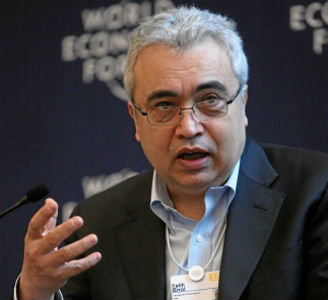March 2016, Vol. 243, No. 3
Web Exclusive
IEA Sees 'Light At The End Of The Tunnel' For Oil Markets

The IEA struck a more bullish note in its latest monthly report, pointing to “signs that prices might have bottomed out.”
The Paris-based energy agency found a variety of reasons to think that the oil markets are turning a corner, including: supply outages in Iraq, Nigeria, and the UAE; the declines in non-OPEC supply; tepid but steady demand; recent weaknesses in the U.S. dollar; and the potential that OPEC takes stronger action to boost prices, although any meaningful steps to reduce supply remain unlikely.
The March report is much more bullish than the IEA’s previous edition, when it came to the conclusion that it was “very hard to see how oil prices can rise significantly in the short term.” Since that Oil Market Report was published in early February, oil prices have rallied by nearly 40 percent.
Much of the rally has a lot more to do with market sentiment than with the fundamentals. Oil speculators have closed out a huge chunk of their short positions, making bets that oil prices had reached a bottom. The short-covering rally contributed to a sharp jump in prices.
Still, the underlying levels of supply and demand in the oil market did change a bit since February. A pipeline outage in Nigeria led to the disruption of 300,000 barrels per day. Exports from Iraq fell by 220,000 barrels per day in February. And the UAE also saw production levels decline unexpectedly. Moreover, the IEA says that Iran’s return to the market “has been less dramatic than the Iranians said it would be; in February we believe that production increased by 220 kb/d and, provisionally, it appears that Iran’s return will be gradual.”
Declines in U.S. shale are well underway, with U.S. output nearing the 9 million barrel-per-day threshold. More companies are scrapping drilling plans and idling rigs, and as a result, depletion will increasingly overwhelm new sources of supply. The IEA sees U.S. production falling by 530,000 barrels per day in 2016. The U.S.-based EIA has previously projected a stronger decline of 700,000 barrels per day.
Other non-OPEC countries will see output fall. The IEA lowered its expectations for output from Brazil, Colombia and other countries. All told, non-OPEC production could fall by 750,000 barrels per day. In February, the IEA thought those declines would only reach 600,000 barrels per day, so while the exact numbers are impossible to predict, the trend is important: as of March, the IEA sees the market balancing faster than it had predicted in February.
The demand side of the equation looks steady, if not strong. Oil consumption should grow by about 1.2 million b/d in 2016, an estimate that the IEA has not changed in a few months. That level is substantially lower than the five-year average of 1.8 million b/d, which helps explain why it has taken so long for demand to soak up excess supply. China’s consumption continues to grow, but slower than in previous years. U.S. demand is flat. Demand is flat or has declined on an absolute basis in Brazil, Japan and France.
At the same time, demand has not collapsed, dispelling some fears about a painful global economic recession. Other emerging markets, especially India, will grow more briskly. On balance, global demand is “sound, but not rock-solid.” There is little chance that demand will surprise on the upside – any uncertainty is “skewed to the downside. “
Weighing on prices is the ongoing rise in oil inventories from around the world, evidence that attests to the fact that supply continues to exceed demand. OECD commercial stocks continue to break record highs. Storage levels in the U.S., in particular, have surged to impressive heights. For the first quarter of 2016, the IEA believes that global oil markets are oversupplied by about 1.9 million b/d, a level that will drop to 1.5 million b/d in the second quarter. By the second half, things look much better. The glut eases to just 0.2 million b/d in the third and fourth quarters.
With an eye towards the second half of 2016, the IEA says that “there may be light at the end of what has been a long, dark tunnel, but we cannot be precisely sure when in 2017 the oil market will achieve the much-desired balance.”
By Nick Cunningham of Oilprice.com





Comments